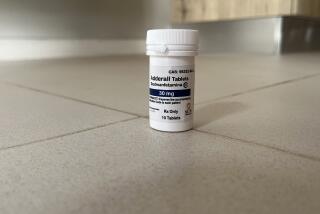Latin America lures investors from India
- Share via
JUITEPEC, MEXICO — Ask for directions to Dr. Reddy’s Laboratories Ltd. in this industrial city in central Mexico and locals will give you a curious look.
Many are unfamiliar with the drug maker, one of India’s largest pharmaceutical companies, which purchased a production facility here in late 2005 for about $59 million.
It may be the first time they’ve heard of an Indian company doing business in Mexico, but it won’t be the last.
Indian investment in Latin America is relatively small, but it’s growing quickly. Indian firms have invested about $7 billion in the region over the last decade, said Rengaraj Viswanathan, head of the Latin American division of India’s Ministry of External Affairs in New Delhi. He figures that amount will easily double in the next five years.
While India has become a magnet for foreign investment, Indian companies are looking abroad for opportunities, motivated by declining global trade barriers and fierce competition at home. Their gaze is falling on Latin America, where hyperinflation and currency devaluation no longer dominate headlines.
“Latin America is becoming a stable and increasingly growing and prosperous market that offers opportunities for our companies,” Viswanathan said.
Like China, India is trying to lock up supplies of energy and minerals to feed its roaring economy. Indian firms have stakes in oil and natural gas ventures in Colombia, Venezuela and Cuba. Bolivia last year signed a deal with New Delhi-based Jindal Steel and Power Ltd., which plans to invest $2.3 billion to extract iron ore and build a steel mill in that South American nation.
At the same time, Indian information technology companies are setting up outsourcing facilities to be closer to their customers in the West. Tata Consultancy Services is the leader, employing 5,000 tech workers in more than a dozen Latin American countries.
Last month it inaugurated an office in Guadalajara, Mexico, that company officials said would soon employ about 500 people and as many as 10 times that within five years. Competition for tech workers in India has driven up costs there, as has the rupee’s rise against the U.S. dollar, enhancing the attractiveness of Latin America.
Indian manufacturing firms, accustomed to catering to low-income consumers at home, are finding Latin America a natural market. Mumbai-based Tata Motors Ltd. has formed a joint venture with Italy’s Fiat to produce small pickup trucks in Argentina. Generic drug makers such as Dr. Reddy’s are offering low-cost alternatives in a region where U.S. and European multinationals have long dominated.
“We are looking at markets to grow,” said Puvvala Yugandhar, senior director of business development at Dr. Reddy’s.
By sharing technology and employing chemists, engineers and programmers, Indian companies are helping to develop Latin America’s human resources -- and not just extract its natural ones. That’s boosting the nation’s standing among the region’s leaders.
Some see India as a partner rather than a rival that’s out to steal their resources and jobs, a common worry here about China.
Brazilian President Luiz Ignacio Lula da Silva this month traveled to India with a contingent of entrepreneurs looking to forge stronger ties. Mexico sent its biggest-ever business delegation to India in March, and the two nations recently signed an economic cooperation accord. Mexican President Felipe Calderon in May snipped the ribbon inaugurating Tata Consultancy Services’ Guadalajara facility.
“He knows that the way to compete with China is in services,” said Ankur Prakash, general manager of Tata Consultancy Services in Mexico. He said 98% of his company’s employees in Latin America were locals.
“We are not sending 747s full of Indians to this part of the world to work,” Prakash said. “We are here to create jobs, not to gobble things up.”
Mexico has been particularly hard-hit by China’s rise. The Asian nation’s exports of textiles, shoes, electronics and other consumer goods have cost Mexico tens of thousands of manufacturing jobs, displaced it as the United States’ second-largest trading partner and flooded its domestic market with imported merchandise. Mexico’s trade deficit with China was a record $22.7 billion last year. China has invested less than $100 million here since 1994, according to figures from the Bank of Mexico.
Mexico’s trading relationship with India, albeit small, is much more balanced. Mexico’s trade deficit with India was just under half a billion dollars last year. Indian companies have invested $1.6 billion here since 1994 -- about 17 times more than China -- according to Mexico’s central bank. Viswanathan of India’s Ministry of External Affairs calculates Indian investment in Mexico to be around $3 billion.
Some of that is in basic industries and traditional maquiladora factories making goods for export. Mexico’s biggest steel plant is owned by ArcelorMittal, whose president and chief executive is Indian tycoon Lakshmi Mittal, founder of Mittal Steel. Mittal merged with Luxembourg-based Arcelor last year to form the world’s largest steel company.
Consumer electronics firm Videocon, based in Mumbai, owns a factory in Mexicali, Mexico, that produces television picture tubes.
But IT companies, including Sasken Communication Technologies Inc. and Hexaware Technologies, also are setting up operations in Mexico. Bangalore-based Infosys Technologies Ltd. is building a service center in northern Mexico that will open this summer and employ 1,000 people within five years, company spokesman Peter McLaughlin said. It will provide consulting and back-office services such as accounting for corporate clients in the U.S. and Latin America.
McLaughlin said the company chose Monterrey because it liked the city’s modern infrastructure, educated workforce, abundance of bilingual talent and proximity to the U.S.
“It’s imperative to serve our clients in the time zone that’s convenient to their businesses,” he said.
Indian pharmaceutical companies, too, are finding Latin America to be healthy territory for expansion. Firms including Ranbaxy Laboratories Ltd., Aurobindo Pharma Ltd. and Cadila Pharmaceuticals Ltd. have sales or manufacturing operations in the region.
Based in Hyderabad, India, Dr. Reddy’s sells its antibiotics, stomach remedies and allergy medications throughout Latin America. But the Mexican plant, purchased from Switzerland-based Roche in late 2005, is its first venture in manufacturing in the region.
The factory’s main product is naproxen. That’s the active ingredient in over-the-counter painkillers such as Aleve, which is manufactured by Bayer, a major customer of Dr. Reddy’s.
Yugandhar, Dr. Reddy’s business development director, said the purchase was attractive for a variety of reasons. The plant, which employs 340 people, is approved by the U.S. Food and Drug Administration for exports to the United States. It has positioned the company to expand in Mexico, and the purchase overnight turned Dr. Reddy’s into the world’s No. 1 supplier of naproxen.
“We wanted to be in the top 10 players in the world ... in generics,” Yugandhar said. “You can’t do that [by growing] organically.”
Yugandhar is the sole Indian at the plant, but says he has had little trouble fitting in. Although there are no Indian restaurants near him, spicy Mexican food has helped fill the void. He is working on his Spanish, but most high-level meetings take place in English, the company’s official language. Mexicans handle the day-to-day operations at the plant.
Plant director Francisco Casillas said the Indian owners were first-rate scientists who were highly cost-conscious, a legacy of the hotly competitive, low-margin Indian market. He misses the abundant resources the facility had under its European owners. But he has developed respect for the Indian approach on his travels to headquarters in Hyderabad.
“They are always looking for more efficiency, productivity and cost savings,” said Casillas, who keeps a figure of the elephant-headed Ganesh, Hindu god of good luck, on his desk. “They have taught us a lot.”
More to Read
Sign up for Essential California
The most important California stories and recommendations in your inbox every morning.
You may occasionally receive promotional content from the Los Angeles Times.










